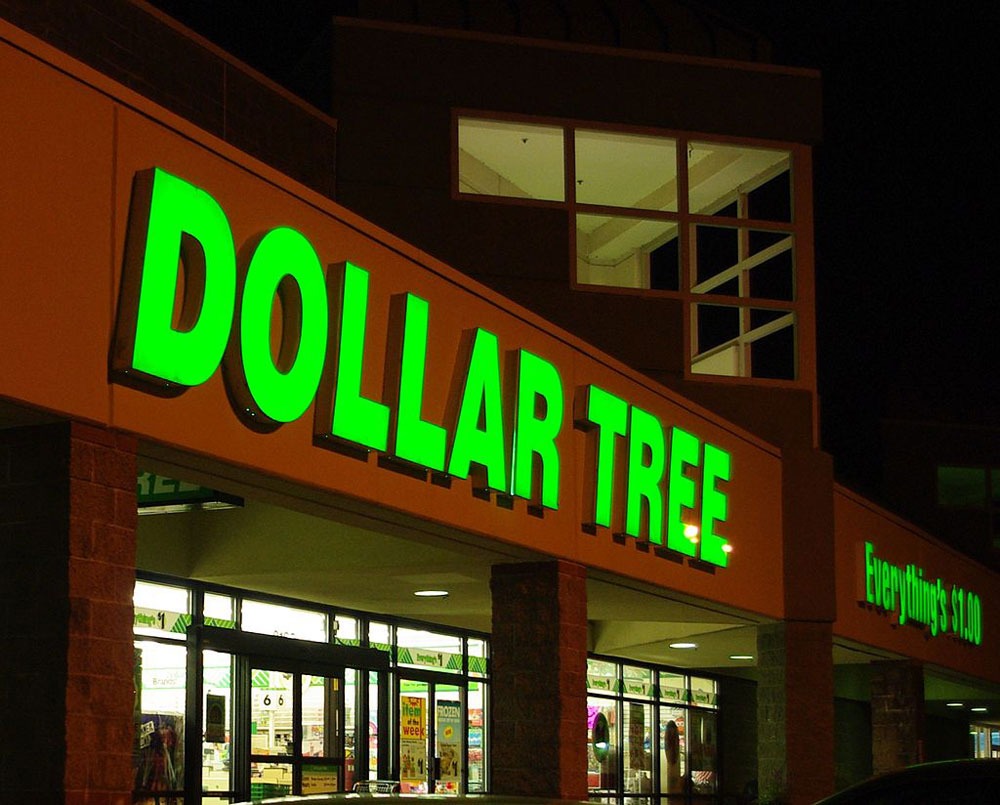
January 9, 2020; Civil Eats
As economic behemoths, Dollar General and its fellow chains, Family Dollar and Dollar Tree (now owner of Family Dollar), are impressive. Last year, more than half of all brick-and-mortar retail openings were dollar stores. Industry leader Dollar General operates more than 16,000 stores in 44 states, opening 900 new outlets just in 2019. These stores are profitable, too, with net sales increasing 9.2 percent from 2017–2018. Dollar stores prosper in lean times and good, with 29 consecutive years of same-store sales growth.
But as replacements for grocery stores in the inner cities and rural communities where they are commonly found, dollar stores are poor substitutes for a supermarket. More than plugging market gaps, dollar stores perpetuate and exacerbate community economic decline as a “secondary invasive species.” They provide little if any fresh food, create few jobs, and provide few economic multipliers for a local economy. But they are often welcomed, particularly in rural places, as the only place to shop.
What does a dollar store look like? Typically, smaller than 10,000 square feet (the median supermarket size is above 40,000 square feet), their aisles are crammed with clothing and household goods and a narrow selection of processed foods—think canned peaches, cereal, cookies, and frozen waffles. Most stock few fresh vegetables, fruits, or meats.
Relying on a lean labor market, dollar stores typically have a staff of eight or nine people, which is less even than small independent grocery stores that employ an average of 14 workers. And although they tout low prices, dollar stores package many of their products in smaller quantities than traditional grocery stores. Sticker prices are lower, but per item costs are higher.
Despite their limited supply of food items, the arrival of a dollar store typically spells doom for a neighborhood’s surviving grocery stores. Reports from many communities suggest that when a Dollar General opens, sales drop by 30 percent in the pre-existing supermarket. That’s not sustainable for a business with razor-thin margins.
Sign up for our free newsletters
Subscribe to NPQ's newsletters to have our top stories delivered directly to your inbox.
By signing up, you agree to our privacy policy and terms of use, and to receive messages from NPQ and our partners.
It’s a long and hard road to sustain a full-service supermarket in a community lined with dollar stores. In 2016, community activists in northeast Greensboro, North Carolina decided to open a grocery store structured as a food co-op 17 years after it lost its only full-service option. When the Renaissance Community Cooperative opened its doors, it was the only grocery store in a two-mile radius with a potential customer base of 35,000 people who, according to the co-op’s feasibility study, were spending $1.34 million every single week on groceries. But the study, completed in 2013, didn’t anticipate the rash of new dollar stores (30 within the two-mile radius of Renaissance) that soon entered the market, now carrying a sizable number of food items. The co-op never reached more than a third of the sales anticipated in the earlier feasibility study and closed in January 2019 despite having 1,300 member-owners, significant financing, and deep community support.
But a growing number of communities are fighting back, trying to keep new dollar stores from opening as well as creating locally owned options. Tulsa, Oklahoma, is one example. It has over 50 dollar stores in its city limits—most in north Tulsa, site of the 1921 race massacre. When the lone remaining grocery store in this predominantly Black community closed in 2017, the district’s city councilor persuaded her colleagues to pass a six-month moratorium on permitting new “small-box discount stores” in her district. Then she proposed a permanent change to the zoning code that prohibited a dollar store from opening within one mile of an existing dollar store in a designated “overlay” district and privileged full-service grocery stores by halving the number of required parking spaces. This too passed the council.
Other cities have similarly used their legal authority to limit dollar stores. In July, Birmingham, Alabama’s city council unanimously voted to establish a healthy food overlay district. “We decided that curbing the growth of dollar stores might actually help us when we go out and recruit a full-service grocery store by saying, ‘Hey, you won’t have to worry about another dollar store coming in and eating into your customer base,’” prophesied the mayor’s director of innovation and economic development.
Rural communities, however, faced with the closure of their last grocery store, haven’t gone the regulatory route. Some have looked to public ownership. In Little River, Kansas, the town purchased the last remaining grocery store from its local owners, applied for a renovation and equipment grant from the local community foundation, and then leased the property back to the original owners and managers. And in Baldwin, Florida, the city is truly the remaining grocery store’s owner-manager, with all employees on the municipal payroll, the town’s maintenance department unloading deliveries and residents going directly to the mayor to request a specific type of milk. These rural communities are essentially saying that food access is a public good, worthy of public dollars.
The work in North Tulsa’s not over, either North Tulsa leaders recruited Eco-Alliance, an Oklahoma investment company focused on hydroponic agriculture and food deserts, to run a full service North Tulsa grocery store and secured a $1.5 million HUD grant through the Tulsa Economic Development Corporation to help. The store is scheduled to open in 2020.
The battle to keep dollar stores from becoming an area’s only fresh food option is clearly an uphill one. But it needs to be fought—and won. There’s too much to lose. North Tulsa’s average life expectancy is 11 years less than predominantly white South Tulsa’s. Access to healthy food must be part of the solution and dollar stores rarely are part of it.—Debby Warren











